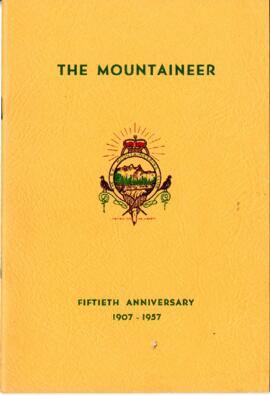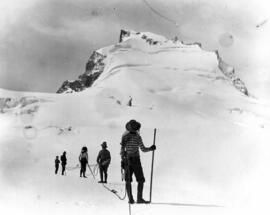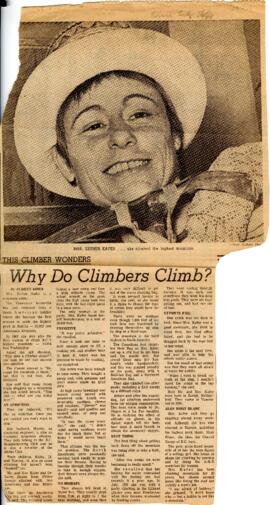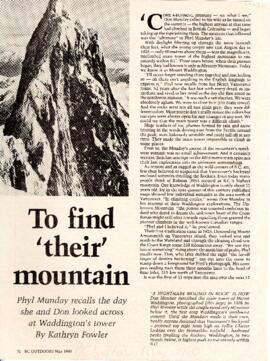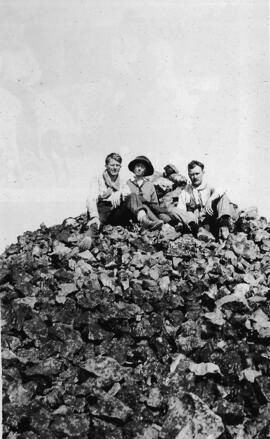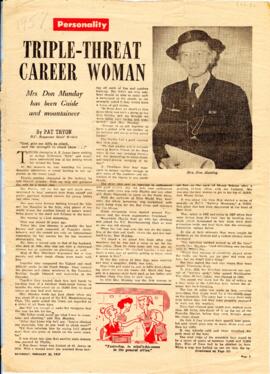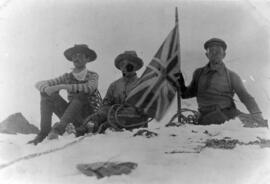While some women of the early 1900s delighted in city life as North Vancouver grew, others ditched their long skirts to head for the mountains. Side-by-side with the men, they joined wilderness explorations and ascents of some of BC’s highest peaks.
Over the decades, women like Phyllis Munday and Esther Kafer bushwhacked, hiked, climbed, trekked, snowshoed, skied, and roped their way across creeks, through dense forest, up into the subalpine, over glaciers and onto icy peaks.
While those are normal outdoor activities for women today, back then it was unusual. In the earliest years, women even had to hide their breeches under their skirts until they left the city edges. Despite this, they were as determined and skilled as the men. They played a large role in the BC Mountaineering Club where they were equal to the men. Their organizational skills also helped in planning expeditions and trips.
In these archives you can find some impressive climbs, such as Esther Kafer’s ascent of Mount Waddington in 1962, making her the first woman to climb it. You can also hear about Alice Purdey’s attempt on Mount Logan when an avalanche injured two fellow climbers.
It was not just mountains that saw successful and determined outdoor women. On the ski slopes, women also showed their talent and were out to have just as much fun as the men. The North Shore’s Gertrude Wepsala won the 1940 Dominion Ski Championship. One of the photos in this selection of archives shows her flying across the finish line.
While female empowerment was lacking in many areas during these decades, when it came to the mountains, these women were striding ahead, not letting societal expectations — or their skirts — get in the way.

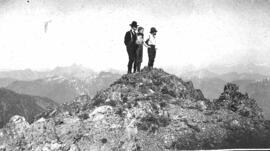
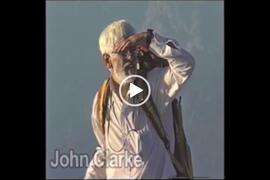
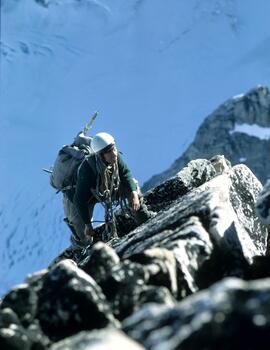
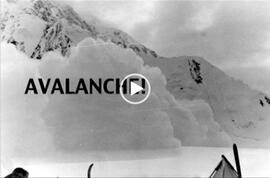
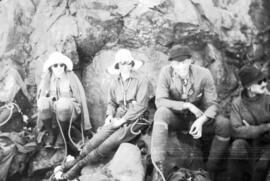

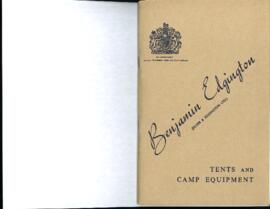
![[Bill Dobson and Jack Sutherland on Garibaldi Lake, Easter week 1928.]](/uploads/r/passion-for-adventure/b/0/0/b00721daa5ce2767407294e77e8206c3642491e9d7124a67f74ba464fcafe4cf/F205-8.009_142.jpg)
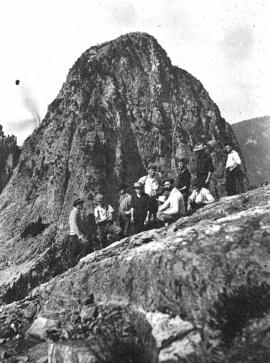
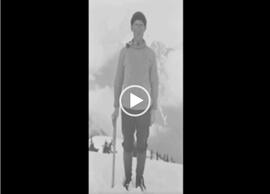
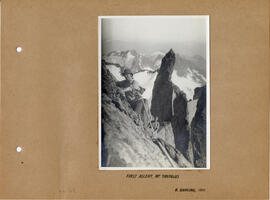
!["First Ascent [Fitzsimmons Peak], 1924"](/uploads/r/passion-for-adventure/1/a/f/1af2ad6843a10f07b8d6e4841cd31ecd53010276ddc9acbb0dca1906fe2b9a74/F205-12.153_142.jpg)
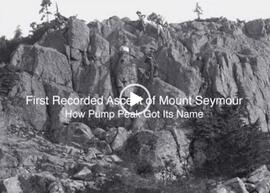


![[Group of Mountaineers on Peak]](/uploads/r/passion-for-adventure/9/8/7/987cc0e11602bc0ba8d31423e803ee180405184d987ead862c8a104544f462bd/F205-64-047_142.jpg)
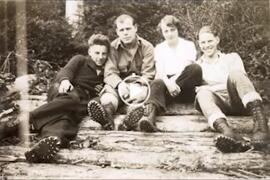
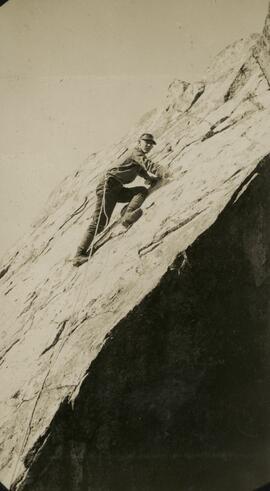
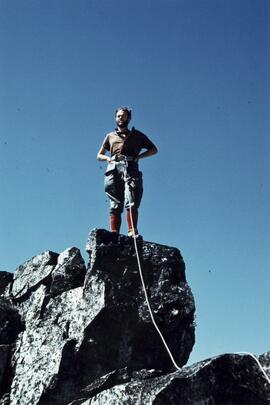
!["Me [Nellie Chapman], Phyllis Dyke, Rachel Moore, Mable Burns, Phong anchorman, glacier at Garibaldi, 1910"](/uploads/r/passion-for-adventure/d/b/b/dbb98b5fa1e6fb8329ede57709124aa0151806a55f559e3eeccf82ad99f41aec/F205-64-017_142.jpg)
![[Mountaineering Equipment Historical Development]](/uploads/r/passion-for-adventure/8/5/8/858137e632917a567bf1ef1f05d6a933fc58768961514f013b81686032b162c2/F243-S1-f1-i_4__142.jpg)
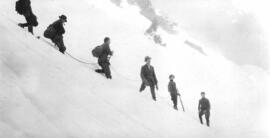
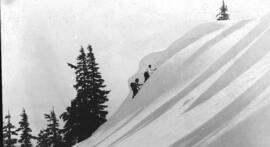
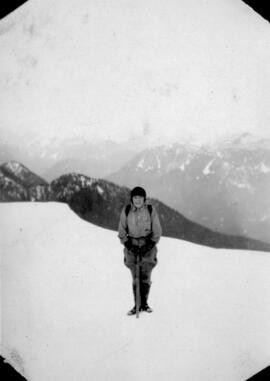
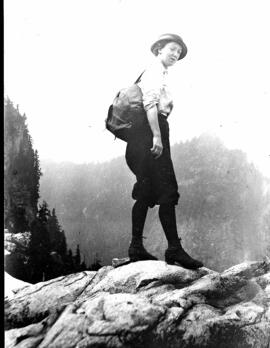
![[North Shore Team Rescue Training Manual Pages]](/uploads/r/passion-for-adventure/f/c/0/fc0f7665e50e18edc14f1c4d7f1d00701409b34562427e25e311f5d0ae2a7af6/F244-S1-f1-i2_142.jpg)
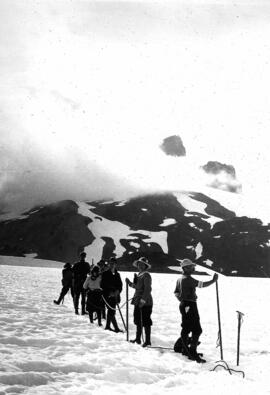
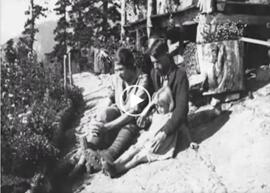
![[Personal Account of Mountain Climbing Activities]](/uploads/r/passion-for-adventure/e/c/d/ecd07b17d347d28235ef503b4fd24d949c769979e3f58845e891017052a51654/F243-S1-f1-i_6__142.jpg)
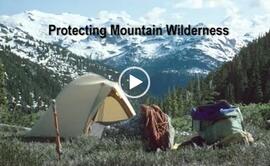
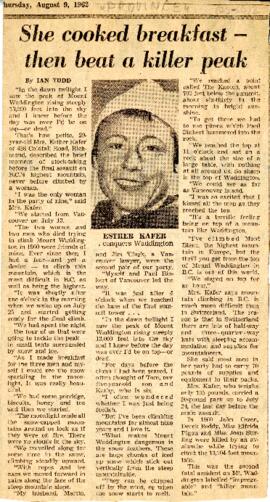
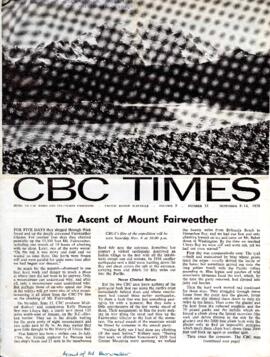
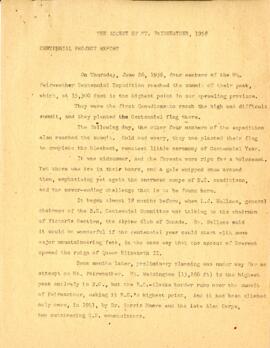
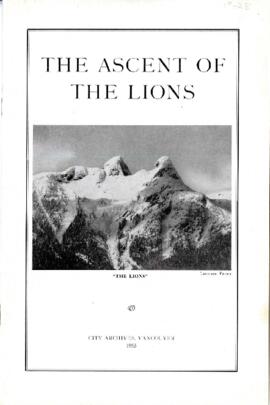
!["The Black Tusk. Garibaldi: Holly and I [Nellie Chapman] climbed part way up this chimney and through the shale which slid from us... rather exciting. Snow in side slope of moving glacier. 1910"](/uploads/r/passion-for-adventure/9/3/7/937418a4305e3393cb9bc6fd89b2fb13aca91cb5feb8162fe780124887d0e155/F205-64-023_142.jpg)
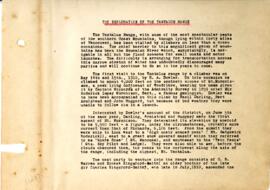
![[The First and Second 'Assaults' on Mt. Tantalus - Selected Pages]](/uploads/r/passion-for-adventure/7/9/7/797462796339ffda6414cc71b3bd35b7a21bb621e643ffe2bbb61267fab0b6c3/F222-A2-_p5-12__142.jpg)
